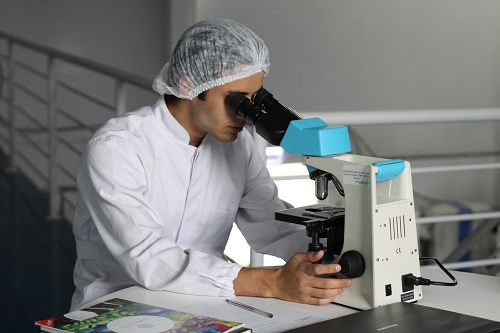Introduction
In the realm of molecular biology and proteomics, BioID has emerged as a groundbreaking technique that enables researchers to unravel the intricate web of protein-protein interactions within living cells. This blog post aims to shed light on the significance of BioID, its working mechanism, the benefits it offers, its limitations, and how it differs from BioID2. Additionally, we will explore the distinctions between BioID and co-immunoprecipitation, another commonly used method for studying protein interactions.
What BioID Means
BioID, short for BioIDentification, is a proximity-dependent biotin identification technique that allows researchers to identify proteins that are in close proximity to a protein of interest within a cellular context. By fusing the protein of interest with a promiscuous biotin ligase enzyme, BioID enables the labeling of interacting proteins with biotin, which can then be isolated and identified using streptavidin-based techniques.
How Does BioID Work
The working principle of BioID revolves around the concept of proximity-dependent biotinylation. When the protein of interest fused with the biotin ligase is expressed in cells, it biotinylates neighboring proteins within a specific radius. The biotinylated proteins can then be selectively captured using streptavidin beads, allowing for their subsequent identification and analysis through mass spectrometry or other proteomic techniques. This proximity-based labeling approach provides valuable insights into the dynamic protein interactome within living cells.
Benefits of BioID
BioID offers several advantages over traditional methods for studying protein-protein interactions. Firstly, it allows for the identification of both stable and transient protein interactions in their native cellular environment. This enables researchers to capture dynamic interactions that may be missed by other techniques. Secondly, BioID is compatible with various cell types and can be applied to study protein interactions in different cellular compartments. Moreover, BioID is a versatile tool that can be used to investigate protein interactions in response to specific stimuli or under different physiological conditions.
Limitations of BioID
While BioID is a powerful technique, it is not without limitations. One major challenge is the potential for nonspecific biotinylation, where proteins that are not in direct proximity to the protein of interest may be labeled. This can lead to false-positive results and requires careful experimental design and data analysis. Additionally, the size of the biotin ligase fusion protein may affect its localization and function, potentially influencing the results obtained. Furthermore, the labeling efficiency of BioID may vary depending on the expression level and localization of the protein of interest.
BioID vs. BioID2
BioID2 is an improved version of BioID that addresses some of its limitations. While both techniques rely on proximity-dependent biotinylation, BioID2 utilizes a smaller biotin ligase enzyme derived from Escherichia coli (E. coli). This smaller size reduces the potential for steric hindrance and nonspecific biotinylation, enhancing the specificity of the labeling. Additionally, BioID2 exhibits faster kinetics, allowing for shorter labeling times and reducing the risk of false-negative results.
Co-immunoprecipitation vs. BioID
Co-immunoprecipitation (Co-IP) and BioID are two distinct methods used to study protein interactions. Co-IP involves the immunoprecipitation of a protein of interest along with its interacting partners using specific antibodies. In contrast, BioID enables the identification of proteins in close proximity to the protein of interest within a cellular context. While Co-IP provides information about direct interactions, BioID offers insights into both direct and indirect interactions, providing a more comprehensive view of the protein interactome.
Conclusion
BioID has revolutionized the field of proteomics by enabling the systematic exploration of protein-protein interactions within living cells. Its proximity-dependent biotinylation approach offers unique advantages, including the ability to capture dynamic interactions and study protein interactions in their native cellular environment. However, researchers must be mindful of the limitations and challenges associated with BioID, such as nonspecific biotinylation. The emergence of BioID2 has further improved the technique, enhancing its specificity and efficiency. By understanding the differences between BioID and co-immunoprecipitation, researchers can choose the most appropriate method for their specific research goals. As BioID continues to evolve, it holds immense potential for unraveling the complex network of protein interactions and advancing our understanding of cellular processes.
Profacgen Launches Fluorescence Polarization Assay for Advanced Protein Interaction Analysis
Profacgen, a leading provider of protein-related services and products, is thrilled to announce the release of their cutting-edge Fluorescence Polarization Assay. This innovative assay empowers researchers with a highly sensitive and accurate tool to study protein-protein interactions and gain deeper insights into cellular processes.
Protein-protein interactions are fundamental to numerous biological processes, including signal transduction, enzymatic reactions, and immune responses. Understanding these interactions is crucial for unraveling the mechanisms underlying cellular functions and developing targeted therapies for diseases. The Fluorescence Polarization Assay offered by Profacgen provides researchers with a powerful method to investigate these interactions.
The Fluorescence Polarization Assay is based on the principle of fluorescence polarization, which measures the rotation of a fluorescently labeled molecule in solution. When a protein interacts with another molecule, its rotational movement changes, leading to alterations in the fluorescence polarization signal. By monitoring these changes, researchers can quantitatively analyze protein interactions and determine binding affinities.
One of the key advantages of the Fluorescence Polarization Assay is its exceptional sensitivity and accuracy. The assay can detect even weak protein interactions, making it suitable for studying a wide range of protein systems. Additionally, the assay requires only small sample volumes, minimizing the consumption of valuable research materials.
The Fluorescence Polarization Assay offered by Profacgen is a versatile tool that finds applications in various research areas:
- Protein-protein interaction studies to identify potential drug targets or investigate mechanisms of disease.
- Protein-DNA interaction studies for transcriptional regulation.
- Enzyme kinetics study for the study of mechanism of enzyme action.
- Small molecule binding studies to identify potential drug candidates or study the mechanism of drug action.
“We are thrilled to introduce our Fluorescence Polarization Assay to the scientific community,” said Crystal, the chief marketing staff at Profacgen. “This assay represents a significant advancement in protein interaction analysis. Providing researchers with a reliable and sensitive method to study protein interactions and accelerate scientific discoveries.”
For more information about the Fluorescence Polarization Assay and other services provided by Profacgen, please visit their website at https://www.profacgen.com/fluorescence-polarization.htm.




